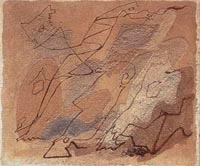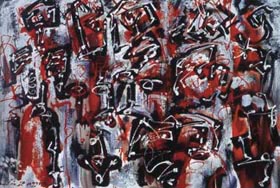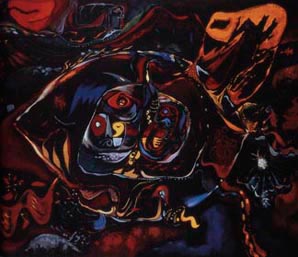 |
| André Masson, Les chevaux morts, 1927, oil and sand on linen, 46 x 55 cm. Courtesy Centre Georges Pompidou, Paris. Musée National d'Art Moderne/ Centre de creation industrielle |
 |
| André Masson, Les chevaux morts, 1927, oil and sand on linen, 46 x 55 cm. Courtesy Centre Georges Pompidou, Paris. Musée National d'Art Moderne/ Centre de creation industrielle |
 |
| André Masson, Traité du désespoir, 1961, oil, sand and metallic paint on linen, 88 x 130 cm. Private collection, Paris. Courtesy MNCARS, Madrid |
 |
| André Masson, Paysage iroquois (detail), 1942, oil on linen, 77.5 x 101.5 cm. Private collection. Courtesy MNCARS, Madrid |
André Masson (1896-1987) was at the Museo Nacional Centro de Arte Reina Sofia, Madrid, from 29 January to 19 April.
Back to Writing